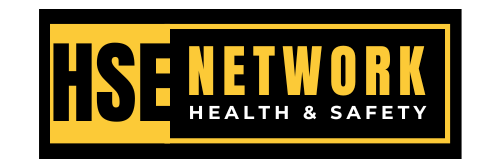Food Safety: How Some Flavorings Can Be Dangerous? 12 Best Tips

Food Safety: Why are Food Flavourings Problems for Food Workers?
This article emphasizes Food Safety because some chemicals may be present in food flavorings that can cause permanent lung damage when inhaled. This danger initially became public when federal investigators identified a serious lung disease in workers exposed to a chemical known as diacetyl, which is used in butter-flavored popcorn production. Workers are also at risk from airborne exposure to other flavoring chemicals used in various settings in the food industry, including coffee roasting plants, bakeries, and candy factories.

PRODUCTS THAT MAY CONTAIN CHEMICALS POTENTIALLY HARMFUL TO WORKERS:
- Flavored Popcorn (both microwaved and bagged)
- Coated snacks such as cheese-flavored chips, crackers, and butter pretzels
- Refrigerated dough products
- Baked goods such as bread, rolls, crackers and biscuits
- Butter flavorings and starter distillates
- Fruit flavorings
- Dry mixes
- Coffee and flavored coffee creamers
- Pet foods
- Candies
- Cooking oils (butter flavored)
- Vegetable shortening, margarine, and other butter substitutes
- Dairy products
- Other food items with flavorings as an ingredient
SYMPTOMS
HOW DO I KNOW IF I AND/OR MY CO-WORKERS HAVE BEEN AFFECTED?
Symptoms are not present in all cases and can vary in severity. Symptoms may include:
- Shortness of breath
- Chronic coughing
- Wheezing
- Extreme fatigue
- Trouble with strenuous tasks
- Fever, muscle aches, night sweats, and weight loss
- Frequent or persistent eye, nose, throat, or skin irritation

WHAT TYPES OF LUNG PROBLEMS CAN FLAVORING CHEMICALS CAUSE?
There is evidence that flavoring chemicals can cause disabling lung problems such as:
- Emphysema
- Asthma
- Bronchiolitis obliterans
- Hypersensitivity pneumonitis
- Granulomatous disease
- Interstitial lung disease
HOW CAN WORKERS BE TESTED TO SEE IF THEY HAVE HEALTH PROBLEMS CAUSED BY FLAVORING CHEMICALS?
Any of the symptoms noted above and reported by workers should be considered danger signs of possible flavoring-related disease. In Food Safety, initial screening of workers can be performed by healthcare workers using lung function tests. Actual diagnoses of lung impairments related to flavoring chemicals need to be done by qualified Occupational Health Physicians.
FOOD SAFETY: WHAT CAN I DO?
WHAT CAN WORKERS AND THEIR REPRESENTATIVES DO TO MAKE THE WORKPLACE SAFE FROM FOOD FLAVORING CHEMICALS?
- Seek early treatment: The longer you have symptoms without getting help, the harder they can be to treat successfully. Healthcare professionals, attorneys, and health and safety advocates can all be helpful
resources. - Find a doctor who understands work-related health problems. Provide information (including this factsheet) to your doctor about the possible causes of lung problems caused by flavoring chemicals at your workplace.
- Work with others at your workplace to ensure that your exposure to the hazard is eliminated or reduced.
- Ask for information about flavoring chemicals from your union, health and safety committee, or worker
center. Ask your employer to provide you with information and training about the chemicals you are being exposed to. You have legal rights under OSHA to receive information and training about workplace hazards and chemicals. - Request that your employer take immediate steps to protect workers from exposure (see Controls section) and most importantly—don’t do it alone! Find out if your co-workers have similar problems, and if so, work on the next steps together.
- Protect your legal rights: If you have been affected by these or other health hazards in your workplace, consult a knowledgeable attorney to find out if you may have a potential worker’s compensation claim or a third-party lawsuit.
HOW CAN FOOD FLAVORING EXPOSURES BE CONTROLLED IN WORKPLACES?
There are many resources to assist workplaces in preventing hazardous exposure to flavoring chemicals.
The most common control methods, listed in order of effectiveness of Food Safety:
Engineering Controls
- Use a ventilated booth or partial enclosure to collect dust and vapors during manufacturing or packaging operations.
- Isolate the mixing area from the rest of the plant.
- Provide mechanical or pneumatic assistance with bag and sack handling.
Food Safety Administrative and Work Practices
- Use a closed process wherever possible to transfer flavoring ingredients
- instead of manual pouring.
- Establish standard procedures for cleaning containers and mixing tanks.
- Establish a hazard communication program that meets the requirements of the OSHA hazard communication standard [29 CFR 1910.1200] and the Globally Harmonized System of Classification and Labeling of Chemicals [OSHA 2006].
- Establish standard procedures for cleaning up all spills, whether small or large, wet, or dry.
Personal Protective Equipment
- Establish a respiratory protection program that meets OSHA requirements.
- Monitor each process and provide respiratory protection whenever possible exposure to potentially harmful flavoring chemicals exists.
- Use chemical-resistant gloves and eye protection.
As the food industry is involved in such dangers, Food Safety shall be prioritized, Food Safety as per international standards.
Read More: How to Download Reface Mod APK
